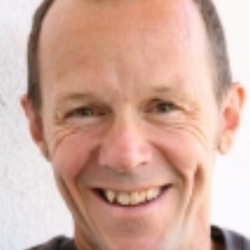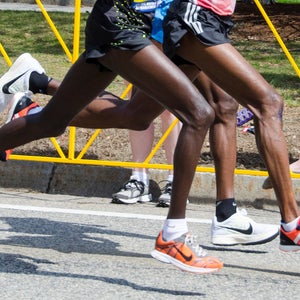

Pete Magill
Published
Loading up on carbs and fat is proven to work, but only for certain races and with its own side effects. Here's the science on what actually works.
Avoiding premature peaking requires a strategic, patient, long-term view that builds over months and seasons.  
Your long run pace depends on your running goals, what systems you're trying to improve, current fitness, and what you mean by long.
Runners make a mistake when they base all their training on the length of a target race: here's what you need to be your best at every distance.
A popping sensation in your knee may not mean serious damage. Pete Magill answers what the likely cause is and how to treat it.
We often hear the term VO2 max in relation to fitness and in training programs. What does it mean and how important is it?
Treadmill running has some unique risks, but you can reduce your treadmill injury risk by following a few simple guidelines.
Hill repeats are a super-effective 5K workout. Here's how to schedule them into your training.
If you want to net a goal performance in your next race, follow these racing guidelines from Pete Magill's book, "Fast 5K."
5 Equipment-free exercises to strengthen the hamstring, one of the most important and injury-prone muscles for running.
The acceleration mechanics practiced by the worldÔÇÖs top sprinters are, by and large, the same mechanics youÔÇÖll use (or should use) in your sport.
Mileage isn't a training plan, just the sum of the workouts you need to train for your goal race. Here's how to figure out what you need.
A deconstruction of the myth of "falling forward," and the physics behind how to actually create a fast, efficient stride.
Thorough advice on why runners need resistance training, how much you should do, and how to fit it into your running schedule
HereÔÇÖs how to adjust your training in the heat, and help your body adapt so it can handle more.
Speed-work spokesman Pete Magill explains why sprints, strength, and agility are just as crucial in distance running as they are in field sports.
Why it's best to wait for the off-season to give blood.
If distance runners are so strong, why are they so skinny?
Timing training is crucial in young runners' growth cycles, but the most important thing you can do is help them build a love for the sport.
Racing with a pre-determined goal pace fails to take into account race-day variables and will lead to sub-optimal results.
If our brain gets worried that weÔÇÖre running too hard, it shuts down muscle fibers. Here's how to reengage your mind and muscles.
Pushing the pace downhill is tempting, but carries a cost that negates any time gains. Here's why.
You want to deplete your carb supply to get many of the long run's training benefits. Here's whyÔÇöand the exception.
Runners at any age can get speedier by adding intensity to their trainingÔÇöwith care. Top masters runners and coaches tell how.
Pete Magill gets scientific about sex, and explains the strategies that support his enduring love of running.
Masters champion and coach Pete Magill explains the nuances of long run recovery, plus when you should start doing speedwork as a beginner or running returnee.
Training for maximum velocity is essential to run your best. These four key exercises will improve your power and speed.
HereÔÇÖs how much reducing the weight of your shoes can improve your 5K times.
Plus: How heat training differs from altitudeÔÇöand how to maximize its effects.
Masters runner Pete feels your pain, and coach Magill gives sage advice on dealing with achilles injuries and treating recovered stress fractures.
Five ways to fight aging and run faster for more years.
Don't blame your genes for your running injury history, blame your training plan. Five ways to stop training like an idiotÔÇöand start staying healthy.
You can run a good marathon off a low-volume, high-intensity training program, but to reach your full potential, you have to have it all: volume and intensity.
Pete Magill explains how it is easy to be tough when you run smart and hurt less than everyone around you.

































